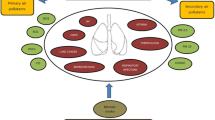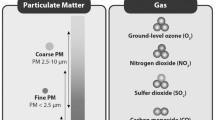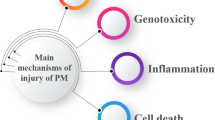Abstract
Incense smoke is increasingly being recognized as a potential environmental contaminant and is linked to malignant and non-malignant respiratory diseases. The detoxification of environmental contaminants including polycyclic aromatic hydrocarbons (PAHs) involves the induction of cytochrome P-450 family enzymes (CYPs) by PAHs. However, the detoxification of PAHs also results in the generation of reactive and unstable intermediary metabolites which are implicated in the oxidative stress, DNA damage, and inflammation. It is unclear whether CYPs are similarly induced by incense smoke, which incidentally contains substantial amounts of PAHs. Here, we examined the impact of long-term incense smoke exposure on the induction of CYPs in male Wister Albino rats. Incense smoke exposure significantly induced the expression of CYP1A1, CYP1A2, and CYP1B1 mRNAs in both lung and liver tissues. The extent of CYP1A1 and CYP1B1 induction was significantly higher in the liver compared to that in the lung, while that of CYP1A2 was greater in the lung than in liver. Incense smoke exposure also increased malondialdehyde and reduced glutathione levels in lung and liver tissues, and the catalase activity in the liver tissues to significant levels. Furthermore incense smoke exposure led to a marked increase in TNF-α and IL-4 levels. The data demonstrate for the first time the capacity of incense smoke to induce CYP1 family enzymes in the target and non-target tissues. Induction of CYPs increased oxidative stress and inflammation appear to be intimately linked to promote the carcinogenesis and health complications in people chronically exposed to incense smoke.





Similar content being viewed by others
References
Wang B (2007) Characteristics of emissions of air pollutants from burning of incense in temples, Hong Kong. Sci Total Environ 377:52–60
Yeatts KB, El-Sadig M, Leith D et al (2012) Indoor air pollutants and health in the United Arab Emirates. Environ Health Perspect 120:687–694
Wahab AA, Mostafa O (2007) Arabian incense exposure among Qatari asthmatic children. A possible risk factor. Saudi Med J 28:476–478
Alokail MS, Al-Daghri NM, Alarifi SA, Draz HM, Hussain T, Yakout SM (2011) Long-term exposure to incense smoke alters metabolism in Wistar albino rats. Cell Biochem Funct 29:96–101
Chuang HC, Jones T, Chen Y, Bell J, Wenger J, BéruBé K (2011) Characterisation of airborne particles and associated organic components produced from incense burning. Anal Bioanal Chem 401:3095–3102
Chiang KC, Chio CP, Chiang YH, Liao CM (2009) Assessing hazardous risks of human exposure to temple airborne polycyclic aromatic hydrocarbons. J Hazard Mater 166:676–685
Chuang HC, Jones T, BéruBé K (2012) Combustion particles emitted during church services: implications for human respiratory health. Environ Int 40:137–142
Ruchirawat M, Navasumrit P, Settachan D (2010) Exposure to benzene in various susceptible populations: co-exposures to 1,3-butadiene and PAHs and implications for carcinogenic risk. Chem Biol Interact 184:67–76
Chiang KC, Liao CM (2006) Heavy incense burning in temples promotes exposure risk from airborne PMs and carcinogenic PAHs. Sci Total Environ 372:64–75
Tse LA, Yu IT, Qiu H, Au JS, Wang XR (2011) A case-referent study of lung cancer and incense smoke, smoking and residential radon in Chinese men. Environ Health Perspect 119:1641–1646
Friborg JT, Yuan JM, Wang R, Koh WP, Lee HP, Yu MC (2008) Incense use and respiratory tract carcinomas: a prospective cohort study. Cancer 113:1676–1684
Lin TC, Krishnaswamy G, Chi DS (2008) Incense smoke: clinical, structural and molecular effects on airway disease. Clin Mol Allergy 6:3
Al-Rawas OA, Al-Maniri AA, Al-Riyami BM (2009) Home exposure to Arabian incense [bakhour] and asthma symptoms in children: a community survey in two regions in Oman. BMC Pulm Med 9:23
Yang CC, Tu ME, Wu YH (2009) Allergic contact dermatitis from incense. Contact Dermat 61:185–186
Ahmed M, Al-Daghri N, Alokail MS, Hussain T (2013) Potential changes in rat spermatogenesis and sperm parameters after inhalation of Boswellia papyrifera and Boswellia carterii incense. Int J Environ Res Public Health 10:830–844
Chen CC, Lee H (1996) Genotoxicity and DNA adduct formation of incense smoke condensates: comparison with environmental tobacco smoke condensates. Mutat Res 367:105–114
Chiang KC, Liao CM (2006) Sci Total Environ. Heavy incense burning in temples promotes exposure risk from airborne PMs and carcinogenic PAHs. 372:64–75
Navasumrit P, Arayasiri M, Hiang OM (2008) Potential health effects of exposure to carcinogenic compounds in incense smoke in temple workers. Chem Biol Interact 173:19–31
Chuang HC, BéruBé K, Lung SC, Bai KJ, Jones T (2013) Investigation into the oxidative potential generated by the formation of particulate matter from incense combustion. J Hazard Mater 244–245:142–150
Lin LY, Lin HY, Chen HW, Su TL, Huang LC, Chuang KJ (2012) Effects of temple particles on inflammation and endothelial cell response. Sci Total Environ 414:68–72
Cohen R, Sexton KG, Yeatts KB (2013) Hazard assessment of United Arab Emirates (UAE) incense smoke. Sci Total Environ 458–460:176–186
Buters JTM, Doehmer J, Gonzalez FJ (1999) Cytochrome P450-null Mice. Drug Metab Rev 31:437–447
Ortiz de Montellano PR (1995) Cytochrome P450 structure, mechanism, and biochemistry, 2nd edn. Plenum Press, New York
Ioannides C, Lewis DFV (2004) Cytochromes P450 in the bioactivation of chemicals. Curr Top Med Chem 4:1767–1788
Kim JH, Stansbury KH, Walker NJ, Trush MA, Strickland PT, Sutter TR (1998) Metabolism of benzo(a)pyrene and benzo(a)pyrene7,8-diol by human cytochrome P450 1B1. Carcinogenesis 19:1847–1853
Shimada T, Guengerich PF (2006) Inhibition of human cytochrome P450 1A1-, 1A2-, and 1B1-mediated activation of procarcinogens to genotoxic metabolites by polycyclic aromatic hydrocarbons. Chem Res Toxicol 19:288–294
Jung MH, Kim HR, Park YJ, Park DS, Chung KH, Oh SM (2012) Genotoxic effects and oxidative stress induced by organic extracts of particulate matter [PM 10] collected from a subway tunnel in Seoul, Korea. Mutat Res 749:39–47
Shang Y, Fan L, Feng J, Lv S, Wu M, Li B, Zang YS (2013) Genotoxic and inflammatory effects of organic extracts from traffic-related particulate matter in human lung epithelial A549 cells: the role of quinones. Toxicol In Vitro 27:922–931
Jeyabalan J, Vadhanam MV, Ravoori S, Gupta RC (2011) Sustained overexpression of CYP1A1 and 1B1 and steady accumulation of DNA adducts by low-dose, continuous exposure to benzo (a) pyrene by polymeric implants. Chem Res Toxicol 24:1937–1943
Sutter TR, Greenlee WF (1992) Classification of members of the Ah gene battery. Chemosphere 25:223–226
Alexander DL, Eltom SE, Jefcoate CR (1997) Ah receptor regulation of CYP1B1 expression in primary mouse embryo-derived cells. Cancer Res 57:4498–4506
Draper HH, Hadley M (1990) Malondialdehyde determination as index of lipid peroxidation. Methods Enzymol 86:421–431
Aebi H (1984) Catalase in vitro. Methods Enzymol 105:121–126
Owen OG (1980) Determination of glutathione and glutathione disulfide using glutathione reductase and 2-vinylpyridine. Anal Biochem 106:207–212
See SW, Wang YH, Balasubramanian R (2007) Contrasting reactive oxygen species and transition metal concentrations in combustion aerosols. Environ Res 103:317–324
Chuang HC, Jones T, Chen TT, BéruBé K (2013) Cytotoxic effects of incense particles in relation to oxidative stress, the cell cycle and F-actin assembly. Toxicol Lett 220:229–237
Shimada T (2006) Xenobiotic-metabolizing enzymes involved in activation and detoxification of carcinogenic polycyclic aromatic hydrocarbons. Drug Metab Pharmacokinet 21:257–276
Bartsch H, Castegnaro M, Rojas M, Camus AM, Alexandrov K, Lang M (1992) Expression of pulmonary cytochrome P4501A1 and carcinogen DNA adduct formation in high risk subjects for tobacco-related lung cancer. Toxicol Lett 64–65:477–483
Stücker I, Jacquet M, de Waziers I, Cénée S, Beaune P, Kremers P, Hémon D (2000) Relation between inducibility of CYP1A1, GSTM1 and lung cancer in a French population. Pharmacogenetics 10:617–627
Iba MM, Fung J, Chung L et al (2006) Differential inducibility of rat pulmonary CYP1A1 by cigarette smoke and wood smoke. Mutat Res 606:1–11
Baulig A, Garlatti M, Bonvallot V et al (2003) Involvement of reactive oxygen species in the metabolic pathways triggered by diesel exhaust particles in human airway epithelial cells. Am J Physiol Lung Cell Mol Physiol 285:L671–L679
Chen SY, Wang LY, Lunn RM et al (2002) Polycyclic aromatic hydrocarbon-DNA adducts in liver tissues of hepatocellular carcinoma patients and controls. Int J Cancer 99:14–21
Imaizumi T, Higaki Y, Hara M (2009) Interaction between cytochrome P450 1A2 genetic polymorphism and cigarette smoking on the risk of hepatocellular carcinoma in a Japanese population. Carcinogenesis 30:1729–1734
Harrigan JA, McGarrigle BP, Sutter TR, Olson JR (2006) Tissue specific induction of cytochrome P450 (CYP) 1A1 and 1B1in rat liver and lung following in vitro (tissue slice) and in vivo exposure to benzo(a)pyrene. Toxicol In Vitro 20(2006):426–438
Kim JH, Sherman ME, Curriero FC, Guengerich P, Strickland PT, Sutter TR (2004) Expression of cytochromes P450 1A1 and 1B1 in human lung from smokers, non-smokers, and ex-smokers. Toxicol Appl Pharmacol 199:210–219
Chuang HC, Jones TP, Lung SC, BéruBé KA (2011) Soot-driven reactive oxygen species formation from incense burning. Sci Total Environ 409:4781–4787
Alarifi SA, Mubarak MM, Alokail MS (2004) Ultrastructural changes of pneumocytes of rat exposed to Arabian incense [Bakhour]. Saudi Med J 25:1689–1693
Sidle EH, Casselman R, Smith GN (2007) Effect of cigarette smoke on placental antioxidant enzyme expression. Am J Physiol Regul Integr Comp Physiol 293:R754–R758
Rahman I, MacNee W (1999) Lung glutathione and oxidative stress: implications in cigarette smoke-induced airway disease. Am J Physiol 277:L1067–L1088
Barnes PJ, Shapiro SD, Pauwels RA (2003) Chronic obstructive pulmonary disease: molecular and cellular mechanisms. Eur Respir J 22:672–688
Bhalla DK, Hirata F, Rishi AK, Gairola CG (2009) Cigarette smoke, inflammation, and lung injury: a mechanistic perspective. J Toxicol Environ Health B 12:45–64
Hsu NY, Wang JY, Wu PC, Su HJ (2012) Paternal heredity and housing characteristics affect childhood asthma and allergy morbidity. Arch Environ Occup Health 67:155–162
Wang IJ, Tsai CH, Chen CH, Tung KY, Lee YL (2011) Glutathione S-transferase, incense burning and asthma in children. Eur Respir J 37:1371–1377
Acknowledgments
This study was funded by the research grant, LGP-32-6 from the King Abdulaziz City for Science and Technology (KACST), Riyadh, Saudi Arabia.
Conflict of interest
None
Author information
Authors and Affiliations
Corresponding author
Rights and permissions
About this article
Cite this article
Hussain, T., Al-Attas, O.S., Al-Daghri, N.M. et al. Induction of CYP1A1, CYP1A2, CYP1B1, increased oxidative stress and inflammation in the lung and liver tissues of rats exposed to incense smoke. Mol Cell Biochem 391, 127–136 (2014). https://doi.org/10.1007/s11010-014-1995-5
Received:
Accepted:
Published:
Issue Date:
DOI: https://doi.org/10.1007/s11010-014-1995-5




